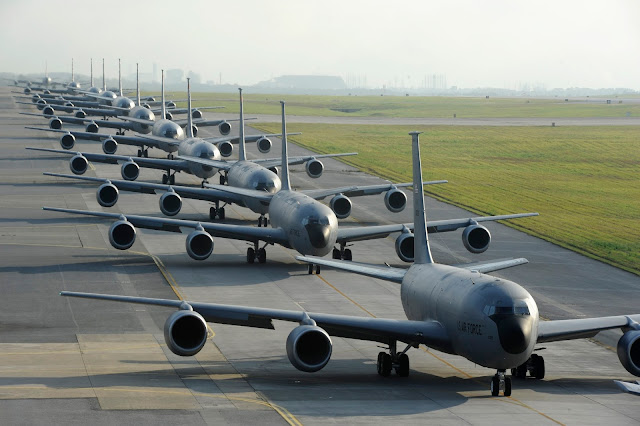U.S. should sell aerial tankers to Taiwan
On Jan. 5, China unilaterally announced that airlines can use four new flight routes over the Taiwan Strait, including three extension routes that connect perpendicularly to the major route M503, which runs close to and parallel to the sensitive “mid line” of the Taiwan Strait.
Starting these routes unilaterally violates International Civil Aviation Organization (IACO) rules requiring consultation with affected parties, as it violates a March 2015 Chinese agreement with Taiwan that it only operate southbound M503 flights and not use the extension routes.
China’s use of all four routes increases the chance of accidental military clashes over the Taiwan Strait, as it will now be more difficult for Taiwan’s air defenses to keep track of civilian flights, especially if China’s People’s Liberation Army Air Force (PLAAF) exploits aerial congestion over the Strait to gain military advantage.
Failure to follow sensitive air routes already has caused tragedy: on Sept. 1, 1983, a Soviet Sukhoi Su-15 fighter shot down Korean Air Lines flight 007 after it had strayed too close to Soviet nuclear forces on Kamchatka, killing 269 people.
China’s risking of passenger’s lives is cynical and dangerous. Both China and Taiwan station hundreds of accurate and deadly surface-to-air missiles (SAMs) on the Strait, giving both sides the ability to immediately intercept perceived aerial threats. Perhaps Beijing wants such a crisis to justify further military action.
This is only the latest Chinese move to increase military pressure on Taiwan. Starting in late 2016 the PLAAF began exercise flights that “surround” Taiwan, using its new Xian H-6K strategic bomber that can carry six nuclear-armed land-attack cruise missiles, or over 36 precision-guided bombs. Then this past November and December, H-6K bombers flew “clockwise” and “counterclockwise” missions around Taiwan, with the later mission featuring PLAAF Sukhoi Su-30MKK fighters.
China’s aerial intimidation exercises are deadly serious. They are real preparations for the day China chooses to impose an aerial blockade around Taiwan, which would usually precede a much larger aerial and amphibious invasion. Last Dec. 27, spokesman for China’s Taiwan Affairs Office, An Fangshan, indicated these flights will continue, stating, “everyone will slowly get used to it.”
Indeed, they could escalate in 2018. Through 2017 the PLA tested a new aerial refueling capable version of the H-6K that could enter service soon, meaning with regular aerial refueling, H-6K bombers could fly multiple “circles” around Taiwan in a single mission. Today the PLA has a small number of H-6U and Russian Il-78 aerial tankers, but this number could grow should the PLA produce refueling versions of its new Xian Y-20 heavy transport aircraft.
Soon, PLAAF bombers could be escorted by PLA Naval Air Force Shenyang J-15 fighters operating from China’s two — and soon to be three — aircraft carriers. Informal sources indicate the carriers may host an improved version of the Shenyang J-15 fighter with phased array radar, making it just as capable as Taiwan’s Lockheed-Martin F-16A fighters now being upgraded with similar radar.
Taiwan requires better Lockheed-Martin F-35 fighters, but with aerial tankers its 144 F-16s can better deter Chinese aggression over the TaiwanStrait and better respond to China’s air and naval constriction. A force of 4 to 6 Boeing KC-135 tankers taken from U.S. Air Force service is perhaps the most economical option Washington could offer Taipei.
Tankers would allow F-16 to better maintain a Combat Air Patrol (CAP) presence beyond the range of Chinese SAMs, giving cover to other Taiwan manned fighters searching for errant airliners, rather than using one-way SAMs. KC-135 tankers would also allow Taiwan F-16s to keep constant pace with circling PLAAF bombers and fighters.
Some may regard tankers as the kind of “offensive” capability that Washington has avoided selling to Taiwan since the late 1970s. But in the context of China’s military constriction tankers can also be a “defensive” weapon.
To “interpret” the August 1982 Communique with China seeking to restrict arms sales to Taiwan, which he clearly disliked, President Reagan approved a little-known Aug. 17, 1982 National Security Memorandum. It stated, ” it is essential that the quantity and quality of the arms provided to Taiwan be conditioned entirely on the threat posed by the PRC.”







Comments
Post a Comment